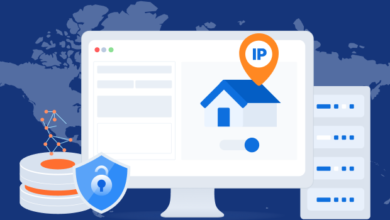1. Introduction
Changing cloud accounts has become part of modern life. Whether you’re a student graduating from a university, a businessman changing email service providers, or an IT admin handling a corporate transition, there’s one thing you can’t ignore: data migration.
Moving emails, cloud files, calendars, and contacts sounds simple, until you’re knee-deep in confusing export tools, partial downloads, and broken folder structures. So how do you actually migrate your data from one cloud to another without risking data loss or spending days figuring it out?
Let’s break it down.
2. Why Cloud Migrations Are Becoming More Common
Fifteen years ago, most digital data lived on local devices. Today, we live in the cloud. Email accounts, file storage, productivity suites—all are now hosted in platforms like Google Workspace, Microsoft 365, or similar services.
And with this shift has come an explosion in migrations:
- Students leaving school-provided accounts and setting up new ones for their personal use.
- Professionals needing access to their historical data.
- Small businesses moving from Google to Microsoft, or vice versa. Some even go further and migrate their whole websites.
- IT teams consolidating domains after mergers or acquisitions.
Each scenario brings a unique challenge. But the underlying need is the same: move everything safely, accurately, and quickly.
3. Manual Migration Methods: Do They Still Work?
Technically, yes. You can migrate cloud data manually using built-in tools and workarounds.
If you’re a Google user, for instance, you could use Google Takeout to export your data. After hours of download and upload cycles, you’ll eventually move your files and emails to a new account. Similarly, in Microsoft’s world, admins can use PowerShell scripts or the Exchange Admin Center to shift data between accounts.
There are also some step-by-step guides that help you along the way. For example, VaultMe provides an excellent resource on how to transfer your Google Drive to another account.
But here’s the problem: while the methods exist, they’re not always efficient or user-friendly.
4. Why Free Migration Tools Aren’t Enough
Free migration methods might seem attractive at first glance, especially if you’re trying to avoid spending money on a third-party service. Tools like Google Takeout or basic PowerShell scripts offer a DIY approach that can work in theory.
However, in practice, most users, both individuals and IT teams, quickly run into serious limitations that outweigh the initial cost savings. One article put it well: free tools can be overkill for admins and not enough for individuals.
Let’s look at why these free tools often fall short:
They’re often slow
Transferring cloud data manually can be incredibly time-consuming. Exporting an inbox using IMAP or downloading an archive from Google Takeout may seem straightforward until you realize you’re dealing with tens of thousands of messages, gigabytes of attachments, and hundreds of nested folders.
Even with a fast internet connection, the process of downloading and re-uploading content can take hours or even days. And that’s not including time spent organizing everything once it arrives in the new account. For users with limited bandwidth or outdated hardware, these delays can become even more significant.
They’re error-prone
Free migration methods, including manual ones, often require multiple steps, each of which introduces new opportunities for problems. A single browser timeout or failed upload can corrupt your file transfer or leave you with incomplete data.
For example, a user exporting their Gmail via Google Takeout might find that some email threads are missing, or that ZIP files downloaded from Google Drive are incomplete or broken. The result? You have to repeat the entire process from scratch, guessing where it went wrong.
Interruptions during uploads, especially large ones, can lead to skipped files, duplicates, and inconsistent folder structures. Free tools often don’t alert you when something is skipped or lost. You only realize the damage after you’ve started working in your new account.
They often don’t preserve everything
One of the biggest disappointments with free tools for individual users is that they rarely migrate your data in a structured or complete way.
- Email folders and labels may be lost or flattened.
- Timestamps can be changed or removed, creating confusion in collaborative environments.
- Drive files may lose formatting and metadata.
For users who depend on precise organization, such as freelancers managing client folders or students retaining years of academic material, this breakdown in structure can be highly disruptive.
They’re confusing for non-technical users
Even the most detailed instructions for free tools can seem overwhelming if you’re not tech-savvy. Managing multiple accounts, navigating permission settings, and understanding the differences between formats like MBOX, PST, or EML files can quickly become frustrating.
Many users attempt a manual migration only to abandon it partway through, either because they’re unsure how to proceed or they fear they’ve made an irreversible mistake.
Even experienced IT staff may find that free tools require significant trial and error, testing, and fine-tuning—especially when dealing with large-scale or mixed-platform migrations (e.g., Gmail to Microsoft 365, or vice versa).
They lack reliable support
Perhaps the most important downside: free tools don’t come with support. If something breaks, you’re typically on your own.
You may find yourself:
- Digging through outdated forum threads
- Relying on unofficial YouTube tutorials
- Repeating failed migrations multiple times
- Or contacting product support teams who explicitly state they don’t support these use cases
When migrating critical data—whether personal or professional, this uncertainty becomes a major risk. For organizations, failed migrations can result in data loss, productivity downtime, and even compliance issues.
The bottom line? The “free” route often costs you time, accuracy, and peace of mind.
5. What Makes Paid Automated Tools a Smarter Solution?
This is where paid automated tools like VaultMe come into play. Automated cloud migration services are built specifically to move your Gmail, Google Drive, Microsoft 365 email, and OneDrive content, with zero downloads.
You sign in to your old and new accounts, start the transfer, and the tool handles the rest. Folder structures stay intact, and email labels and read/unread states carry over.
Here’s how VaultMe works:
- You connect your old and new accounts securely (OAuth authorization).
- You start the transfer, and the platform runs everything in the cloud.
- The app maintains your email folder structure, Drive hierarchy, read/unread statuses, and more.
- The service generates a detailed migration report that you can download from the migration page and keep for future reference.
For admins, it removes the headaches of scripting or user-by-user migrations.
Want to move from Gmail to Office 365? Here’s a complete walkthrough: How to Migrate Gmail to Office 365.
6. Use Cases: Who Benefits Most from Automation?
When it comes to cloud migration, not all users have the same needs or tolerance for complexity and risk. Whether you’re an individual moving a single account or an IT team managing hundreds of users, automated migration tools provide scalable, reliable solutions that adapt to various situations.
Let’s look at the groups that benefit most from cloud migration automation.
Graduating students, freelancers, and anyone with personal cloud accounts will find automated tools simpler and safer than trying to migrate data manually. You don’t have to worry about broken files, data loss, or botched folder hierarchies.
Automated tools aren’t just for one-off users. They scale for organizations, offering centralized control, support, and speed that free tools can’t match. Migrating multiple user accounts? Tools like VaultMe save hours of setup and testing.
Admins handling enterprise-level transitions (like domain changes or platform shifts) will appreciate this guide: How to Migrate to Microsoft 365
7. Expert Tips for a Smooth Cloud Migration
No matter how you migrate, here are a few tips that can make the process smoother:
- Clean up first: Review your data and delete anything you no longer need. This reduces transfer time and clutter in your new account.
- Have backups: Before starting a migration, it’s wise to keep a local or cloud backup—just in case.
- Start small: If you’re unsure about the process, test it on a single user or a subset of your data first.
- Document the process: For IT teams, logging each phase of the migration helps with internal audits, team coordination, and troubleshooting.
- Use the right tool: For both personal and professional migrations, tools like VaultMe will save you hours and reduce your risk of errors.
8. Conclusion
Cloud migrations are inevitable. Whether you’re moving for personal reasons or overseeing an organization-wide change, the way you approach data transfer can make all the difference.
Manual methods may appear free, but they’re often complex, unreliable, and time-consuming. In contrast, automated tools offer a seamless experience as they are secure and offer a way to move your emails and files efficiently. This is saving you time, stress, and potential data loss.
So, before you start downloading and dragging files across tabs, consider a smarter path. Let automated tools make your migration easy, accurate, and automatic.





